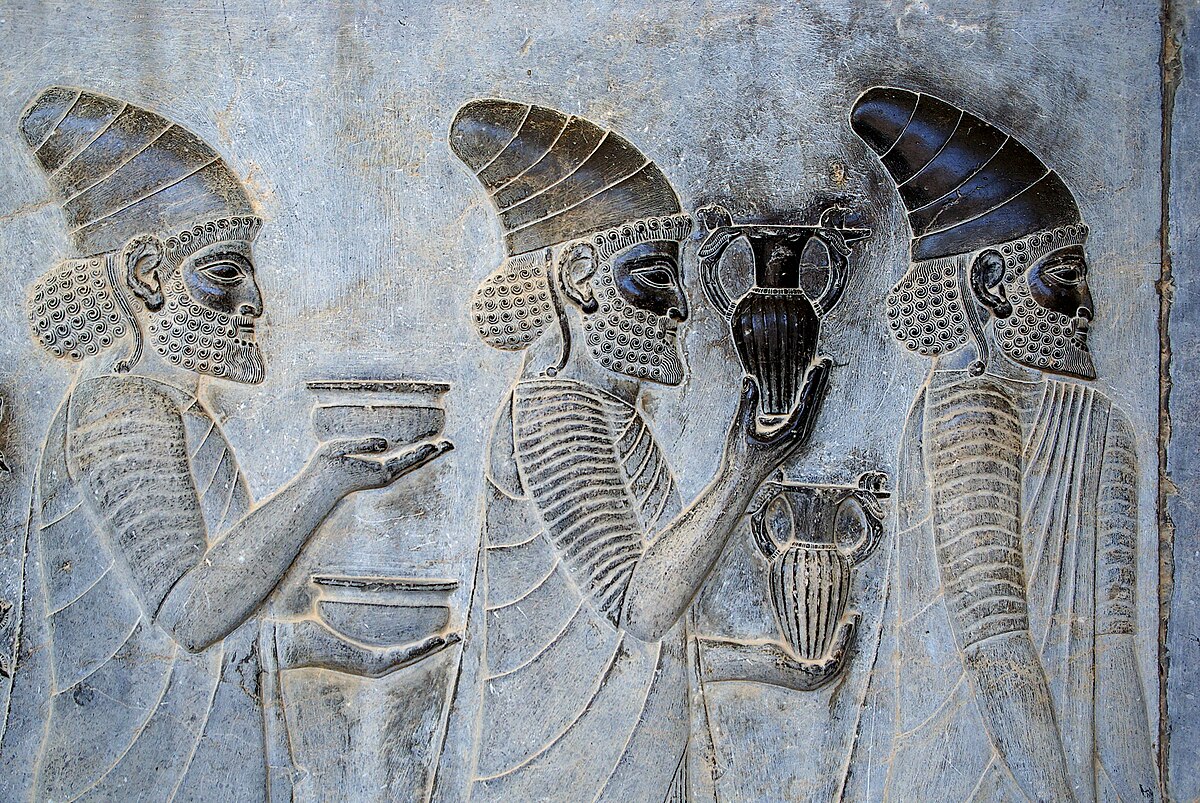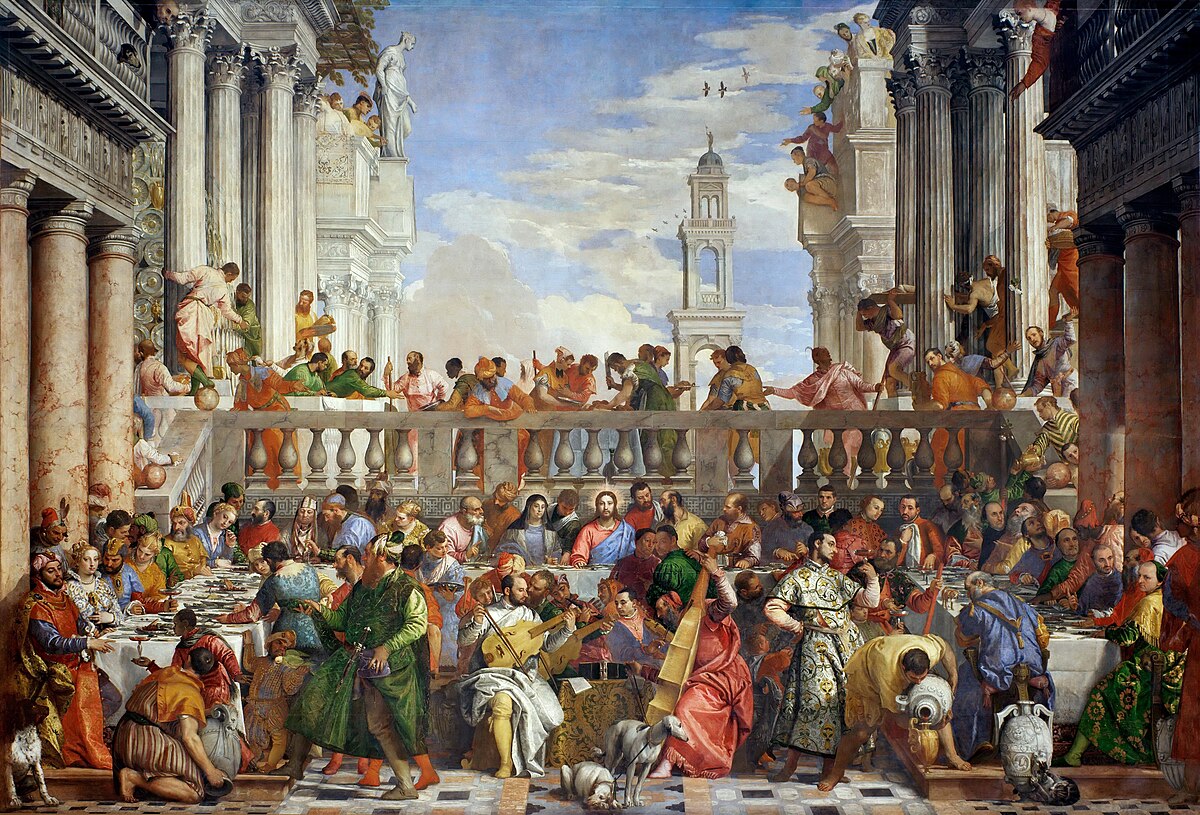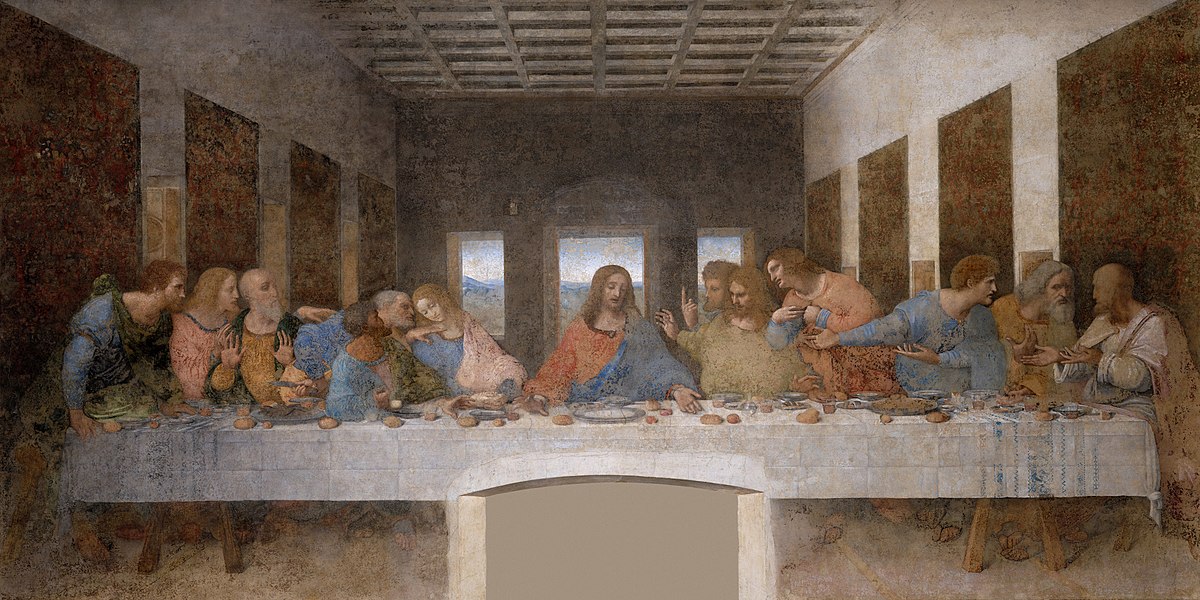You're Invited to Sip the Wines of the Ancient World #WinePW
 |
Detail of a relief on the eastern stairs of the Apadana Palace, Persepolis, depicting Armenian ambassadors, bringing wine to the Persian Emperor. Image borrowed from Wikipedia. |
(If you're interested read more about one of the wineries I visited on that trip here and here.)
While stopping into Ella Valley Vineyards, there was mention of the fact that they’re located near the spot where David fought Goliath. Something about that story put the age of the place in stark relief.
 |
| Statue of Dionysus at the Louvre. Borrowed from Wikipedia. |
Some of these places have claims for being the birthplace of wine, which makes sense since we’re broadly speaking about the birthplace of civilization. We humans have loved our wines for a very long time. We all know that wine was a key part of the cultures of the Greek and Roman empires, as shown by their respective worship of Dionysus and Bacchus, but you might not have really realized or considered that wine traditions existed in ancient cultures across the middle east and even China – that one was actually a surprise to me, but winemaking there dates back to sometime between 7000BCE and 9000BCE.
 |
| Ancient amphora. Image borrowed from Vine Pair. Check out this article by Joshua Malin for a look at a history of ancient wine vessels and transportation. |
There is archeological evidence of winemaking from grapes strewn around the ancient world. Some of the oldest include Georgia (c. 6000 BC), Lebanon (c. 5000 BC), Iran (c. 5000 BC), Greece (c. 4500 BC), and Sicily (c. 4000 BC). The earliest-extant evidence of wine production has been found in Armenia (c. 4100 BC). (Per Wikipedia)
Wine was tied to religious rites from its beginning. We already mentioned Dionysus and Bacchus, but it also played important roles in the religious practices in the Jewish and Christian religions going back to Biblical times. I mean, Jesus' first miracle was to turn water into wine, and wine's also there on the table at the Last Supper.
 |
| The Wedding Feast at Cana, 1563, Musée du Louvre, Paris by Paolo Veronese, More on the Marriage at Cana here. Borrowed from Wikipedia, Public Domain, Link. |
 |
| The Last Supper by Leonardo da Vinci - Borrowed from Wikipedia. Public Domain, Link |
What I find so interesting, is that many of the places that had such an early start at winemaking are no longer places that we immediately associate with great wine traditions. There are lots of reasons for this –– the rise and fall of empires, religious restrictions, and governmental interventions and policies are just a few.
 |
| Georgia is making some of the most fascinating wines out there at the moment. This bottle of Phaesant's Tears Saperavi from Kakheti is very approachable as well and very reasonably priced at around $17. We had it with chicken thighs topped with roasted peppers and tomatoes and rice. |
This month I’m hosting the Wine Pairing Weekend (#WinePW) blogging group and I invite you to join us in exploring the wines of the Ancient World. Join us on April 11th at 8 am PT/ 11 am ET on twitter. We’ll be chatting there under the hashtag #WinePW.
Now I realize some of these wines might not be the easiest to find under regular circumstances, and even more difficult at the moment. As I write this, many people across the US (myself included) are under shelter-in-place or stay at home orders due to coronavirus. Given these difficulties, we’re leaving the wine selection for this topic pretty broad. Explore a bottle of wine from a place with an ancient winemaking tradition while staying at home, look into an ancient winemaking technique, or share a memory of trying one of these wines. There are so many geeky-cool aspects to this topic. Just jump right in!
 |
| A relief showing ancient Roman patrons drinking diluted wine in a tavern in Isola Sacra, Italy. Borrowed from EarlyChurchHistory.org. |
HOW TO JOIN US
If you are a wine writer or blogger, this is your invitation to us.
- Contact me to tell me you’re in: Include blog url, Twitter handle, and any other social media details. If you know your blog post title, include that…but you can also send that a bit closer to the event. We’d just like to get a sense of who’s participating and give some shout-outs and links as we go. Contact me here.
- Send your post title to me by Tuesday, April 7th to be included in the preview post. I will prepare a preview post shortly after getting the titles, linking to your blogs. Your title should include “#WinePW.”
- Publish your post between Friday, April 10th and 8:00 a.m. ET on Saturday, April 11th. You can always schedule your post in advance if you will be tied up that morning.
- Include links to the other #WinePW participants in your post, and a description of what the event is about. I’ll provide the HTML code that you can easily put in your initial post — which will link to people’s general blog url — then the updated code for the permanent links to everyone’s #WinePW posts.
- Get social! After the posts go live, please visit your fellow bloggers posts’ to comment and share. We have a Facebook group for participating bloggers to connect and share, too. If you need an invitation please let me know.
- Sponsored posts are OK if clearly disclosed. Please be sure to disclose if your post is sponsored or if you are describing wine or other products for which you have received a free sample.
Here are a few articles for more inspiration:
- Was Stone Age Wine a Drink of the People? from National Geographic
- From Georgia to Lebanon: exploring the best wines of the ancient world from The Guardian
- Wine throughout history: What were ancient wines really like? from Cult Wines
 |
| Just a little bit of beauty to close things out. Sunset at Bat Shlomo Vineyards in Israel. |




4 comments
I can't remember if I gave you my title. Thankfully I ordered my wine way before the outbreak. My title is Clams Tossed in Herbs and Spaghetti with a Santo Assyrtiko and my blog URL is https://adayinthelifeonthefarm.blogspot.com/. Thanks so much for hosting.
ReplyDeleteSounds delicious!
DeleteI am in! My title is Old World Charm: Tifosi Vino Bianco with Olives and Citrus. My blog is https://www.terristeffes.com Excited to be a part of this fun event.
ReplyDeleteWonderful! Thanks so much Terri!
DeleteThanks so much for leaving your comments and questions. I always love to hear from you!